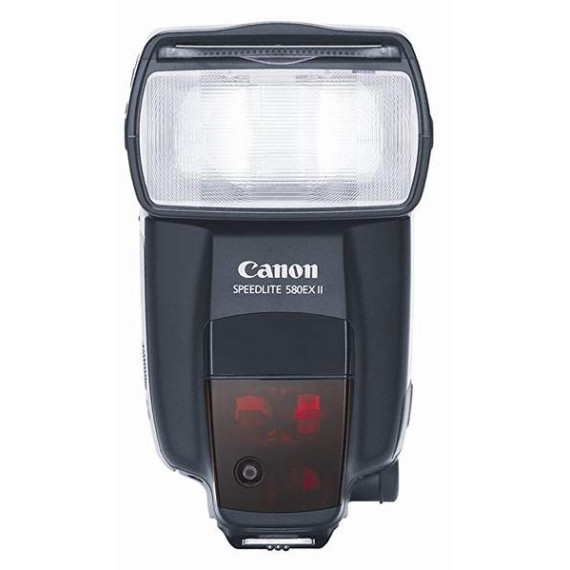Patrick Perdu
I have had this flash since July 2007. It is very decently weather- and dust-proof: I live in Costa Rica, have used it in rain forest and on the beach and it still works just fine. It is quite powerful with an guide number of 58m (hence the "580" name) when zoomed at its maximum of 105mm full frame equivalent (on a crop sensor it is covers the same field of view as a 70mm since the "focal distance" of the flash does not depend on the sensor size - yes I know, it can be confusing). The main features, as you most likely know, are its capability to do multi (i.e. stroboscopic) flash and to be master as well as slave remote controlled in ETTL with the legacy Canon optical control. Would I buy the same now if I were to break it? I would probably even though the 600Ex-RT ( Canon Speedlite 600EX-RT Flash ) goes for about the same price and proposes direct radio control in addition to the normal optical remote control we got to appreciate with the 580 and 430 (slave only for the latter). The 600 is a serious contender considering the ISO range of recent cameras. If I understand correcty, the 580 is much more powerful than the 600: the total amount of light required of the 600 to get a NG 60m zoomed @ 200mm is less than a third of that required of the 580 to get a NG 58m zoomed @ 105mm. In other words, the NG of the 600 if limited to 105mm zoom would be around 20 (assuming the same light losses which is irrealistic). Or, to put it another way, the energy delivered by a 600 to get a NG of 60m is concentrated on less than a third of the surface covered by the 580 for the same measurement. If I am right, then it makes the 600 actually weaker than the 430, although otherwise much better endowed in the features department. In reality the energy delivered by the 600 is most certainly above a third of that put out by the 580 as there are necessarily bigger losses in the extended zoom; yet I would be very surprised that the flash is as powerful as the 580: zooming from 105 to 200 and only increasing the NG by 2 meters would not be very efficient. This would certainly explain why so many people who shoot events report less thermal shutdowns with the 600: if it releases less energy, it heats up more slowly! Also the head of the 600 is bigger not because it is more powerful but because it has a longer zoom: 200mm instead of 105mm. However whoever does remote flash control with the native optical master has struggled with the line of sight limitation as well as the 80 degrees field of control from the 580 as a master (or worse the popup fash of the 7D or the 60D, very useful but necessarily pointing straight ahead). The 600 gets rid of that limitation and this is a serious advantage, but you will need at least one 600 and a ST-E3-RT to control it in addition to your camera to get just one remote flash, as opposed to one 580 or a 430 and a remote capable camera (7D or 60D) for the optical remote control. The 580 remains a very good flash and if you dont mind the line-of-sight/80 degrees requirement or if you need a powerful flash to freeze motion in a wide area, the 580 should fit your bill better than the weaker 600. However if you shoot with a 5DIII at 3200 ISO and want a flash for the future, the 600 should be your choice. Other advantages of the 600 over the 580: Its wider range of zoom allows a better control of light distribution down to 20mm (instead of 24 for the 580) and its longer zoom set in manual can be used for a tighter snoot, although I prefer using grids anyway for the quality of the feathering. It also features a mechanism to hold gels although I am not a priori convinced of its usefulness - the ExpoImaging ROGUEGELS-U Rogue Photographic Design Rogue Gels Universal Lighting Filter Kit already work on any cobra flash with a simple elastic band. Then it has apparently a much better screen with two differnt backlight colors used to distinguish masters from slaves and report overheating units. Better menus are certainly... better, although once one gets used to the 580Ex-II and it idiosyncrasies it wont make much of a difference (think explicit menu option instead of holding the zoom button down to go to remote setup). As for me I am not replacing my 580Ex-II any time soon unless I break it or get robbed, and then I might very well replace it with another 580 just to get the power to light wide scenes from some distance. We will see. ________________________ Edited in July 2014: The 580 ExII remains an excellent flash but I have learned quite a lot in the intervening years. Except when shooting events and mingling in the crowd, where getting a proper exposure essentially mandates TTL, and filling in shadows in bright sunlight where you want the high speed sync feature, I mostly use this flash in manual. If this is how you want to use it, dont spend so much on a single flash when for the current price of $679.99 + $5.49 shipping you can get nine YN-560III with embedded YN603 receivers plus a set of YN603 transceivers to trigger them all. This does not mean you should not consider a 580 ExII for the situations I mentioned above, but if what you do is flashlit landscape at sunset or studio photography, you are better off with more numerous lights to position here and there for much less $$$.







